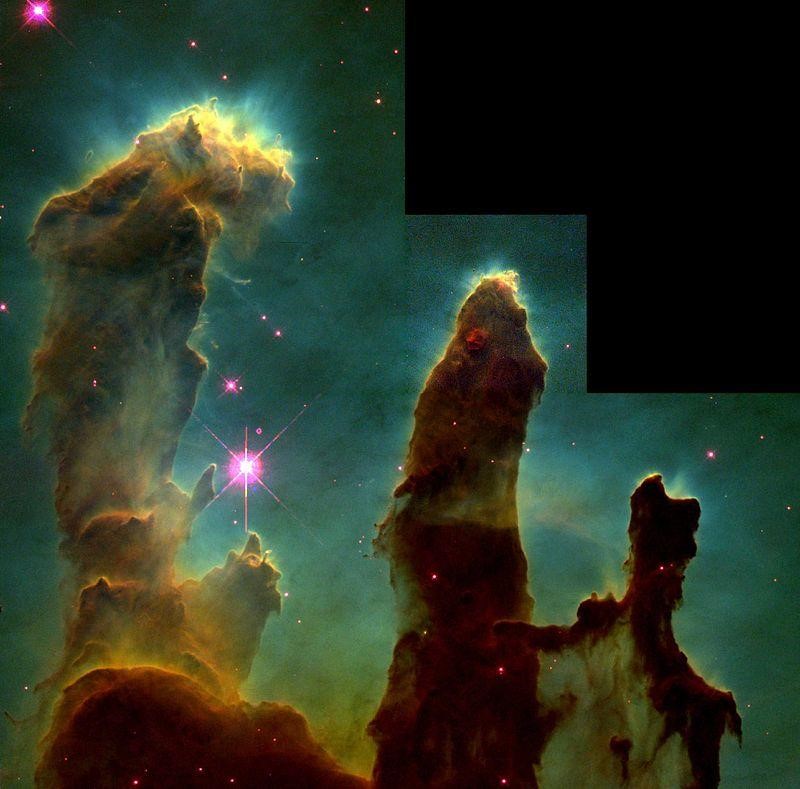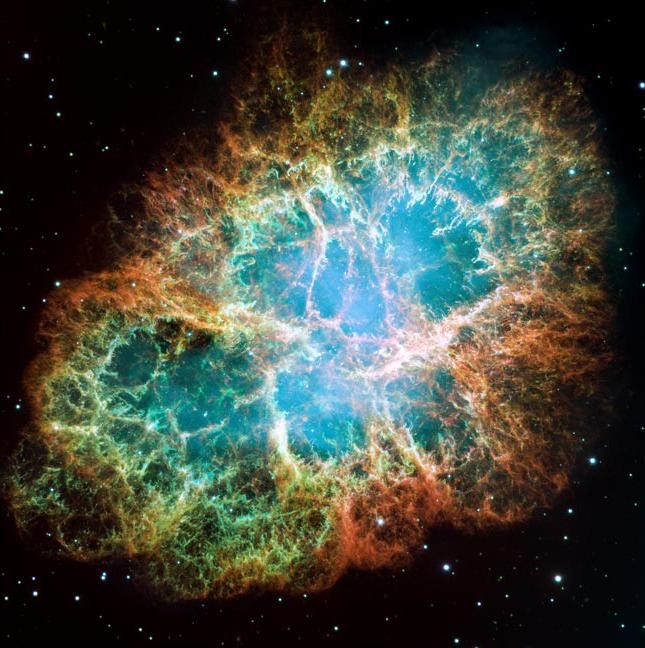





Disclaimer: Copyright infringement not intended.
Context
About
Contributions of Hubble Telescope
Hubble discoveries | a timeline
1990 | The Hubble Space Telescope is launched, after almost twenty years of planning.
1993 | When Hubble was first launched, a mistake with its mirror caused a large blurring effect that severely hampered its ability to complete ground breaking astronomy. The first servicing mission to Hubble had astronauts on the Endeavour space shuttle fix a flaw in Hubble’s mirror, bringing its optics to the stunning level of detail we see today.
1994 | Hubble witnessed a rare cometary impact, taking snapshots of a huge plume of debris left behind Comet Shoemaker-Levy 9 after it collided with Jupiter. Hubble also provided conclusive evidence for the existence of Supermassive Black Holes in the centres of galaxies by observing the galaxy M87.
1995 | Hubble took the famous photo of the Eagle Nebula which was later named 'pillars of creation'.

'Pillars of Creation' credit: NASA, Jeff Hester, and Paul Scowen (Arizona State University)
2001 | Hubble measured the elements in the atmosphere of the exoplanet HD 209458b.
2004 | The Hubble Ultra Deep Field was released allowing astronomers to look even further back in the time of the cosmos.
2005 | Hubble photographed two previously unknown moons orbiting Pluto.
2007 | Hubble observations showed that the dwarf planet Eris was bigger than Pluto. Hubble also assisted the production of a 3D-map showing the distribution of dark matter in the Universe.
2008 | Hubble took a picture of the exoplanet Formalhaut b, the first visual image of an exoplanet. In the same year Hubble found organic molecules on an extrasolar planet and the telescope’s 100 000th orbit around Earth was celebrated.
2010 | Hubble images revealed distant galaxies with likely redshifts (a measure of distance used in cosmology) greater than 8, showing the Universe as it was when it was less than a tenth of its current age. Hubble also photographed a never-before-seen evidence of a collision between two asteroids.
2011 | Hubble made its millionth observation, a spectroscopic analysis of the exoplanet HAT-P-7b. The 10,000th scientific paper using Hubble data was published.
2012 | Images taken by Hubble showed seven primitive galaxies from a distant population that formed more than 13 billion years ago. The images showed the galaxies as they were when the Universe was less than 4 percent of its present age. Later in the year that record was broken when Hubble discovered an object from when the Universe was only 3 percent of its present age, only 470 million years after the Big Bang.
2013 | Hubble was used to determine for the first time the true colour of a planet orbiting another star and found water vapour erupting off the surface of Jupiter’s moon Europa.
2014 | Hubble became the first telescope ever to observe an asteroid disintegrating and revealed the most detailed weather map for an exoplanet ever.
2015 | Hubble observed, for the first time, the effect of gravitational lensing on a distant exploding star, where the powerful gravity of a foreground galaxy acts like a cosmic magnifying glass, enhancing and splitting the image into a cross-shaped pattern of light.

Hubble Space Telescope image of Crab Nebula, a six-light-year-wide expanding remnant of a star's supernova explosion.
Closing Remarks
|
PRACTICE QUESTION Q) The Hubble Space Telescope’s legacy cannot be overstated. Write a note on the contributions made by Hubble Telescope since its launch in the 1990s. |






© 2025 iasgyan. All right reserved